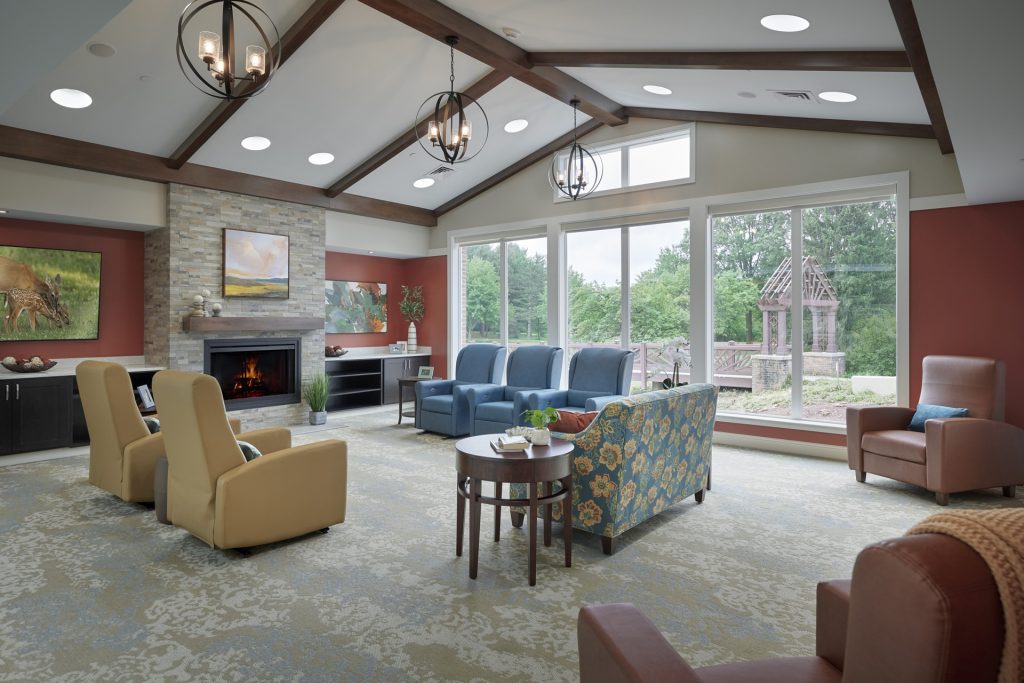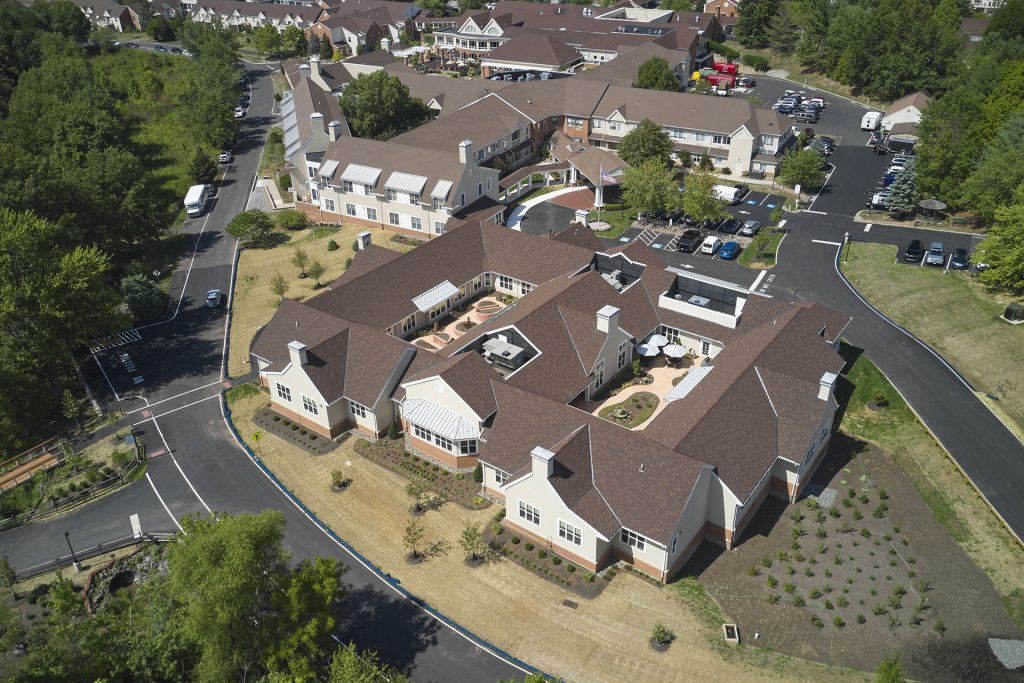Natural Connections for Orientation and Cueing
The memory care residence positions 18 single and 2 companion rooms around two internal courtyards.
The courtyards create multi-directional exposure to daylight within interior spaces. This promotes natural orientation to time of day and seasons and eliminates the need for artificial circadian lighting.









